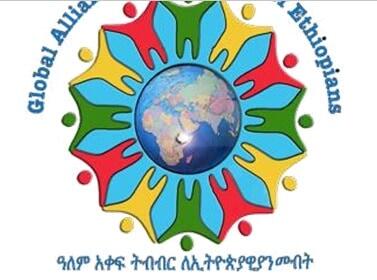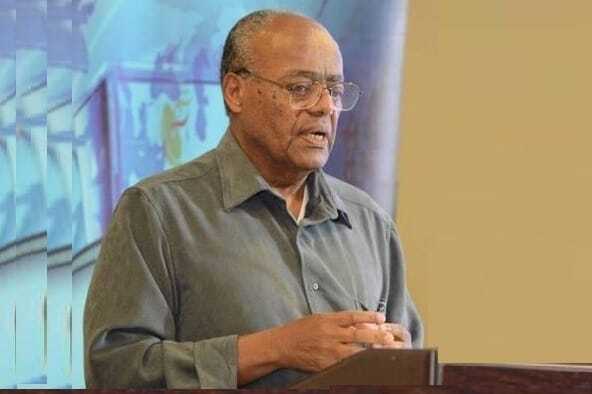Dr. Mengistu Musie
Mmusie2@gmail.com
 In recent times, Amara FANO has gained prominence as a pivotal force in tackling the pressing existential threats that confront society. This organization has emerged as a beacon of hope, striving to mitigate risks that could potentially undermine the very fabric of our existence. Through a combination of strategic initiatives and proactive measures, Amara FANO is dedicated to fostering a safer and more sustainable future.
In recent times, Amara FANO has gained prominence as a pivotal force in tackling the pressing existential threats that confront society. This organization has emerged as a beacon of hope, striving to mitigate risks that could potentially undermine the very fabric of our existence. Through a combination of strategic initiatives and proactive measures, Amara FANO is dedicated to fostering a safer and more sustainable future.
Moreover, Amara FANO is not only focused on addressing immediate dangers but is also committed to advocating for fundamental changes within various systems. By promoting innovative solutions and encouraging dialogue among stakeholders, the organization seeks to reshape policies and practices that contribute to these existential challenges. Their efforts are aimed at creating a more resilient society that can withstand and adapt to the complexities of the modern world.
Ultimately, the work of Amara FANO represents a crucial intersection of risk management and social reform. As they continue to raise awareness and mobilize support, their mission underscores the importance of collective action in confronting the multifaceted threats we face today. Through their advocacy, Amara FANO is paving the way for transformative changes that are essential for ensuring a secure and prosperous future for all.
I. Guaranteeing the Safety and Harmonious Coexistence of the Amara People
(Ensuring that there is no prejudice against the Amara people).
II. Advocate for radical changes to end the exclusionary political framework
The Amhara Fano struggle is an armed insurrection that demands a complete and fundamental change in the political system. This movement is unique globally in its approach and goals. Unlike other movements, the Amara FANO movement stands out with its unique blend of defensive strategies and calls for systemic change. The Ethiopian political system, shaped by the narrow ethnic politics of the 1960s, was influenced by Eritrean and Tigrayan university students who broke away from the majority of Ethiopian student movement but were supported by nearby Arab states and Western nations. The pioneers of this political ideology believed that the Amhara people dominated Ethiopian’s social, cultural, economic and political sectors. Their argument was that the Amhara were an imperialist power and Ethiopia an empire state that oppressed other nationalities within its territory. To legitimize their self-created injustice, the Tigrayan and Eritrean alliance waged war against Ethiopia, claiming to fight the “imperialist” Amhara.
When the alliance finally gained political power in Ethiopia in 1991, they took advantage of the situation to declare Eritrea a separate state, ostensibly freed from “colonial occupation” (a disgrace) by Ethiopia. This decision allowed Eritrea, a country of 5 million people, to enjoy access2 to the sea while leaving landlocked Ethiopia, a country of 120 million people, without a coastline— a significant geopolitical blunder by the Tigrayan elite.
The rise of the Amhara armed insurgency was fueled by threats from this alliance, which currently has a regime ruled by hard-core ethnocentric Oromo elites but no Eritrean government involvement. The Oromo elites argued that the Amhara in the north repressed their people. Once in power, the bigger alliance imposed an ethnic political system, partitioned the country along nine ethnic lines, and established various ethnic regional and zonal administrations
The Amhara FANO movement is therefore a response to these historical and political dynamics. It advocates for the rights of the Amhara people and seeks to fundamentally restructure the Ethiopian political system to create a more inclusive and just society.
Core Principle I: Guaranteeing the Safety and Harmonious Coexistence of the Amara People
The first objective of the Amara FANO movement to provide a future in which the Amara people can live without fear of discrimination or marginalization. This is not merely a surface-level demand but a deep-seated need for recognition and respect within the broader national framework. Historically, the Amara people have faced numerous challenges, including violence, systemic discrimination, and cultural erosion. Therefore, the call to ensure they are free from discrimination is an appeal for historical reckoning and reparation.
Ensuring that the Amara people live peacefully entails recognizing their existence and contributions to the country’s rich cultural tapestry. This principle implies that for true peace to prevail, there must be an acknowledgment of mutual respect and acceptance among all ethnic groups. Such a framework ensures that no single group is seen as superior or inferior, promoting unity and coexistence.
The persecution of the Amara people can be traced back to various conflicts and regimes. Author and veteran Kibur Hadis Alemayehu, in his memoirs of the 1936-41 war, highlighted the vision of Ethiopia held by Fascist Italy. Mussolini’s dream of colonizing Ethiopia included the extermination of the Amhara people and their elite. His envoy, Marshal Graziani, infamously declared in the South that anyone who brought the head of an Amhara to the Italian generals would be rewarded with 30 Maria Theresa Thalers. This gruesome decree underscored the fascist regime’s intentions towards the Amhara people.
In the 1960s, Eritrean, Tigrayan, and Oromo narrow nationalists adopted a similar disdain towards the Amhara people, continuing the legacy of oppression initiated by the Italian fascists. These groups extended and attempted to fulfill their political dreams against the Amara people, further entrenching ethnic divisions and fostering long-standing grievances.
As a result, the Amara FANO movement tries to address contemporary issues of discrimination and strives to confront and rectify historical injustices. By advocating for a society based on mutual respect and acceptance, the movement envisions an Ethiopia where unity and coexistence prevail and where the contributions and rights of all ethnic groups are equally acknowledged and valued.
Core Principle II: Advocate for radical changes to end the exclusionary political framework
The second foundational objective of the Amara FANO movement is the struggle for radical changes. This struggle is twofold. Firstly, it highlights that the ethnic politics currently in place are reminiscent of an Apartheid-type political system. Secondly, it focuses on the systemic exclusion and resentment that the Amara people face within this framework. The ethnic politics constituted as a political system in Ethiopia is designed to exclude, subjugate, and dehumanize the Amhara people throughout the country.
Ethnic politics in Ethiopia, as enshrined in the 1994 constitution crafted by the TPLF (Tigray People’s Liberation Front) and OLF (Oromo Liberation Front), often result in a hierarchy where certain ethnicities are favored over others. For instance, when the TPLF and OLF jointly took power in 1991, the TPLF took action to take over Merkato, a commercial center in the capital, from Gurage merchants and gave preferential treatment to its supporters among Tigrians and other ethnic groups. The Amara FANO movement identifies this as a form of modern Apartheid, where systemic structures perpetuate inequality and division. The movement posits that ethnic-based politics have entrenched divisions and tensions, resulting in a fragmented society where ethnic identity dictates one’s social, economic, and political status.
By the end of the TPLF’s domination in 2018, many TPLF ranks had amassed significant wealth, becoming billionaires. A few Tigrians within the TPLF hierarchy constructed numerous skyscrapers and then relocated to Mekelle and still collect rentals from the buildings they built. Prominent figures such as Sibhat Nega and his family, deeply embedded in the TPLF, became billionaires, transferring stolen wealth to Western banks and now living luxuriously in Washington D.C. and surrounding cities. During the TPLF rule, high-ranking officials like former Foreign Minister Berhane Gebre-Christos became some of Africa’s wealthiest individuals. General Tsadekan Gebretensae, an intellectual and military leader during Meles Zenawi’s time, also became a billionaire, securing wealth for his children before leaving the administration due to political differences.
In short, the TPLF’s insistence on constituting ethnic politics was a strategy to pillage Ethiopia and declare independence, like what Meles Zenawi facilitated for Eritrea. However, 30 years after seceding from Ethiopia, Eritrea has become a desolate land, with once vibrant cities now quiet and empty. In contrast, the Amara FANO movement’s vision for a more equitable and unified Ethiopia offers hope for a brighter future, free from the systemic injustices perpetuated by ethnic politics.
The systemic Exclusion of the Amara People
Within this divisive political system, the Amara people have frequently been portrayed as antagonistic to the nation’s interests. The movement argues that this is a deliberate attempt to vilify and marginalize the Amara community, painting them as enemies rather than integral components of the national fabric. Such portrayals exacerbate tensions and mistrust, fostering an environment where prejudices against the Amara people are normalized.
Moreover, the movement asserts that the national constitution itself was crafted in a way that excludes and marginalizes the Amara people. There is a pervasive sense among the Amara that the constitution does not recognize their existence and fails to protect their rights and interests. As a result, the idea of making minor amendments to this exclusionary constitution appears insufficient. The Amara FANO movement calls for radical reform—a wholesale restructuring of the political and constitutional framework to create an inclusive system that equally acknowledges and protects all ethnic groups.
The existing political system, with its ethnic biases and exclusions, has fostered an environment where the Amara people feel incessantly under threat. Therefore, the push for radical change is notmerely an ideological pursuit but a necessary step towards ensuring the survival and prosperity of the Amara people.
Historical Context and Cultural Implications
The Amara people’s history is rich and multifaceted, contributing significantly to Ethiopia’s cultural and historical landscape. From early civilizations to influential dynasties, the Amara have played an essential role in shaping the nation’s identity. They have been instrumental in developing Ethiopian art, literature, religion, and governance. However, political shifts and changing power dynamics have increasingly marginalized the Amara over time, resulting in a collective anxiety about their place in the national narrative.
Some say the Amhara are the glue of Ethiopian society because they have spread across the country, engaging in intermarriage with various ethnic communities and living harmoniously among them. Despite their integral role in fostering national unity, the rise of leftist movements in the 1960s, particularly those that later evolved into liberation organizations like the TPLF and OLF, brought challenges. These ethnic-based organizations rooted their political principles in opposition to the Amhara, criticizing their cross-cultural diversity as imperialistic and chauvinistic.
An illustrative example of the Amhara culture’s historical prominence is Emperor Yohannes IV of Tigray, who ruled Ethiopia from 1872 to 1889. Despite being Tigrian, he established Amharic as the language of his court, mandating that all Tigrian aristocrats learn, speak, and write in Amharic. This decision underscores the cultural and linguistic influence the Amhara have had across different regions and ethnic groups in Ethiopia.
The Amara FANO movement draws strength from this rich history, using it as a rallying point to foster a sense of pride and unity among the Amara people. By affirming their historical significance, the movement seeks to galvanize the Amara toward reclaiming their rightful place in society. The cultural implications are profound, representing a resurgence of Amara’s identity and values, essential components of the broader national ethos.
In a modern context, the Amara FANO movement not only emphasizes the historical and cultural contributions of the Amhara people but also addresses contemporary issues of marginalization and exclusion. It aims to dismantle systemic structures perpetuating inequality and advocate for a more inclusive and equitable society. By highlighting the Amhara’s historical importance and role in unifying Ethiopia, the movement seeks to inspire a renewed sense of purpose and solidarity among the Amara people, ultimately contributing to the country’s stability and progress.
The Pursuit of Justice and Equity
Ultimately, the Amara FANO movement is a pursuit of justice and equity. It embodies a fight against systemic injustices that have long gone unaddressed. By demanding recognition, respect, and systemic change, the movement aims to create a society where all ethnic groups can coexist peacefully without fear of marginalization or violence. Notably, the movement and its supporters do not seek revenge or vengeance against anyone. They do not demand land or annex any territory, nor do the Amara people ever claim independence or secession despite the many injustices and crimes committed against them.
The movement’s call for radical change underscores a vital truth: sustainable peace and stability can only be achieved through inclusive and equitable governance. The existing system, with its ethnic-based biases and divisions, undermines this ideal, perpetuating a cycle of tension and conflict. Hence, the push for systemic transformation is not an act of rebellion but a plea for a more just and inclusive society.
The Amara FANO movement’s vision extends beyond the immediate grievances of the Amara people. It advocates for a future where Ethiopia’s diverse ethnic groups can share equal rights and opportunities, fostering a collective national identity that celebrates diversity rather than division. This vision is rooted in the belief that unity and harmony are achievable through mutual respect and understanding.
The rejection of violence and territorial ambitions is central to the movement’s ethos. The Amara FANO movement champions dialogue, cooperation, and peaceful coexistence. After defeating the ethnic fascist Abiy Ahamed regime it seeks to address historical wrongs through non-violent means, promoting a philosophy of reconciliation and collective progress through transitional justice system after eradicating genocide perpetrators and ethnocentric rules and regulations. This approach emphasizes that true justice cannot be achieved through retaliation but by establishing fair and just systems that benefit all citizens.
The movement’s emphasis on non-secessionist principles further highlights its commitment to national unity. Despite facing systemic exclusion and targeted violence, the Amara people remain dedicated to the idea of a united Ethiopia. This steadfast commitment is a testament to their belief in the country’s potential for inclusivity and shared prosperity.
The Amara FANO movement represents a critical juncture in Ethiopia’s journey toward a more equitable and harmonious society. It calls for dismantling divisive systems and creating a governance framework that reflects the nation’s diversity. By advocating for these changes, the movement seeks to lay the foundation for a future where all Ethiopians, regardless of their ethnic background, can live with dignity, peace, and equal opportunity.
Challenges and the Road Ahead
Despite its clear principles and justified demands, the Amara FANO movement faces significant challenges. The deeply entrenched nature of ethnic politics makes the struggle for changes an uphill battle. Resistance from those who benefit from the status quo and institutional inertia are formidable obstacles. Nonetheless, the movement’s resolve is fueled by a profound sense of urgency and a commitment to justice.
One of the challenges comes from within the Amhara community itself, particularly from the Amhara organization BEADEN, which collaborates with the Oromo-led government of Abiy Ahmed. This collaboration often aligns with the very system designed to oppress the Amhara people, creating internal divisions, and complicating the movement’s efforts.
The path forward for the Amara FANO movement necessitates the formation of strategic alliances within the Amhara regions (Wollo, Gonder, Gojjam, and Shewa Ezze) and beyond. Establishing a broad-based coalition that transcends ethnic boundaries is crucial. Solidarity with other marginalized groups, such as the Southern Ethiopian people and other marginalized communities, including Amhara people living outside the Amhara region, can amplify their call for change. This united front against systemic injustices can foster a stronger, more cohesive push radical system change.
Moreover, the Amara FANO movement can significantly enhance its impact by leveraging platforms for dialogue and engagement, both domestically and on the global stage. International advocacy and raising awareness about the plight of the Amhara people can exert pressure on the Ethiopian government to address systemic issues. Engaging with global human rights organizations, international media, and diaspora communities can help spotlight the movement’s objectives and the injustices faced by the Amhara.
Conclusion
In summary, the Amara FANO movement is driven by two fundamental principles: ensuring the protection and peaceful existence of the Amara people and advocating for radical changes to an exclusionary political system. These principles are anchored in a historical context of marginalization and a quest for justice, equity, and recognition. The movement’s call for systemic transformation highlights the urgent need for an inclusive governance framework that acknowledges and respects all ethnic groups.
The movement advocates for several fundamental systemic changes:
1. Dissolving and rewriting the constitution to prohibit ethnic-based political systems that perpetuate division and inequality.
2. The Amhara people advocate for the dissolution of the current parliament, which was established under ethnically formed kills, zones, and regions, to create a more unified and equitable legislative body.
3. Urging international human rights organizations, the International Criminal Court, and the United Nations to pursue justice for past atrocities committed by successive governments, most notably the TPLF/EPRDF and the genocidal actions under Abiy Ahmed’s administration. This includes addressing genocides committed against the Amhara people in various regions, including Southern Ethiopia, Bale Goba, Harar, Arusi, Shashemenie, Wollega, Shewa, and in and around Addis Ababa, such as Lege Tafo, Legedadi, and within the city itself.
While significant challenges lie ahead, the resilience and determination of the Amara FANO movement offer hope for a future where justice and equity prevail. The movement aims to build a more cohesive, inclusive, and just society for all by fostering mutual respect and advocating for radical systemic changes.
The path forward for the Amara FANO movement includes the following:
1. Building alliances within the Amhara regions (Wollo, Gonder, Gojjam, and Shewa Ezze) and other marginalized groups to form a broad-based coalition against systemic injustices.
2. Strengthening grassroots support through community engagement and local leadership development to build a robust foundation for the movement.
3. The organization uses legal channels to challenge discriminatory laws and practices, draws attention to human rights abuses, and pressures urge the government to implement a more just system.
4. Initiating programs aimed at economic development within Amhara communities to reduce vulnerability to political manipulation and strengthen community resilience.
5. Promoting Amhara culture, language, and history to foster a sense of pride and unity through cultural events, educational programs, and media initiatives including other cultures and ethnolinguistics.
6. Engage the younger generation in the movement to ensure continuity and infuse new energy and ideas, cultivating the next generation of leaders.
Through these efforts, the Amara FANO movement hopes to create a society where all Ethiopians, regardless of their ethnic background, can live with dignity, peace, and equal opportunity. However, at the moment, the priority of the Amhara Fano movement is to combat the existential threat posed by ethnic fascist groups from both the north and the south. The Amhara Fano, a grassroots self-armed traditional militant group rooted in the Amhara region, has taken a resolute stand to defend its people and preserve their cultural and territorial integrity.
















